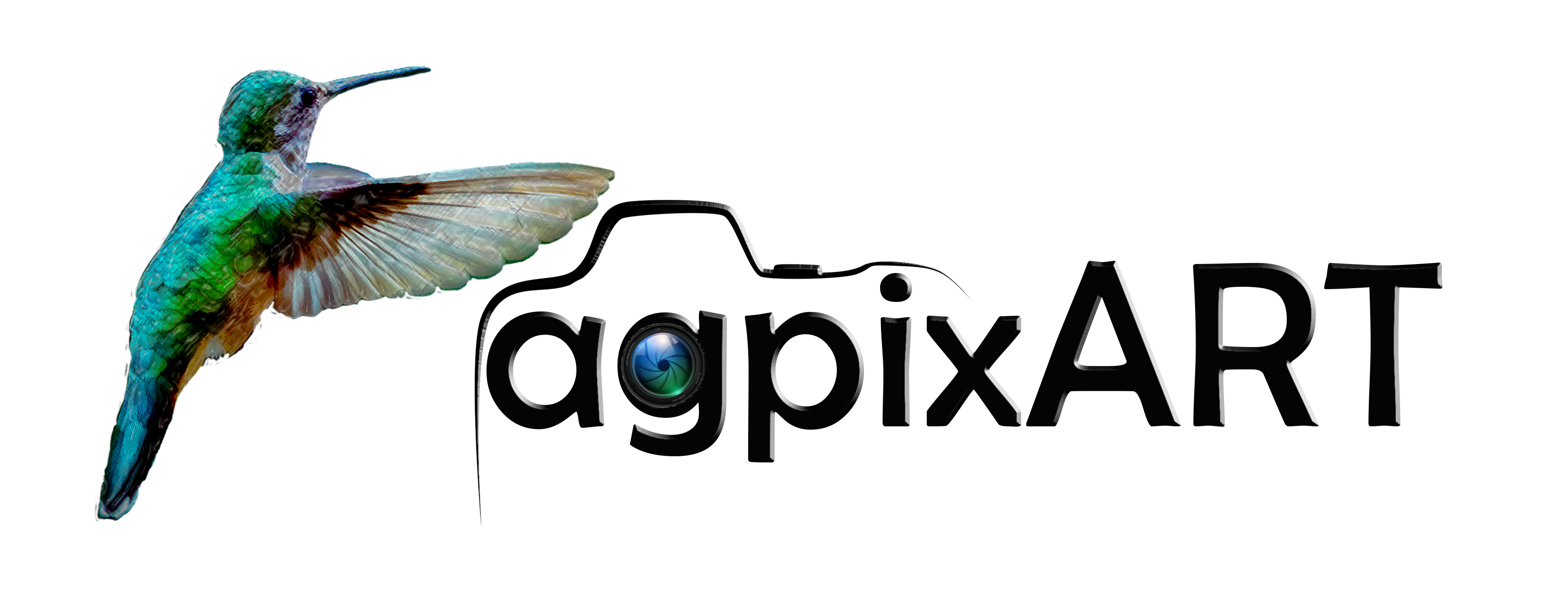Black Turtle Cove & Coast of Cerro Dragon, Santa Cruz
Black Turtle Cove and the coast of Cerro Dragon are two distinct visitor sites on Santa Cruz Island in the Galápagos Islands, each offering unique wildlife and scenic experiences.
Black Turtle Cove, Santa Cruz
Mangrove-Lined Estuary
Black Turtle Cove is located on the Northern coast of Santa Cruz Island, accessible only by panga (motorized dinghy) with engines turned off to protect the environment. This mangrove-lined estuary and designated turtle sanctuary is known for its calm, shallow waters and rich biodiversity. The cove is surrounded by red, white, and black mangroves, creating a serene, protected habitat. Visitors can observe green sea turtles (especially during mating season, January to March), young black-tip and white-tip reef sharks, hammerhead sharks, golden and spotted eagle rays, mobula rays, and various seabirds like blue-footed boobies, pelicans, lava herons, yellow warblers, and brown noddies.
Turtles are often seen swimming, and juvenile marine life thrives in the sheltered waters.
No disembarking is permitted due to conservation regulations.
Coast of Cerro Dragon, Santa Cruz
Ray Parade & Shark Sightings
Cerro Dragon is located on the northwestern coast of Santa Cruz Island. It is a captivating visitor site defined by its rugged hill and striking terrain. A guided trail winds through arid, desert-like landscapes dotted with cactus forests and fragrant Palo Santo trees, culminating at a scenic lagoon lookout. The site derives its name from the distinctive land iguanas that inhabit the area, resembling ancient mythical dragons in their appearance and majesty.
If just snorkeling along Cerro Dragon’s coast expect clear, calm waters teeming with marine life, including white-tip reef sharks, rays, and playful sea lions. Galapagos land iguanas can be often spotted on the shore as well.
Good To Know…
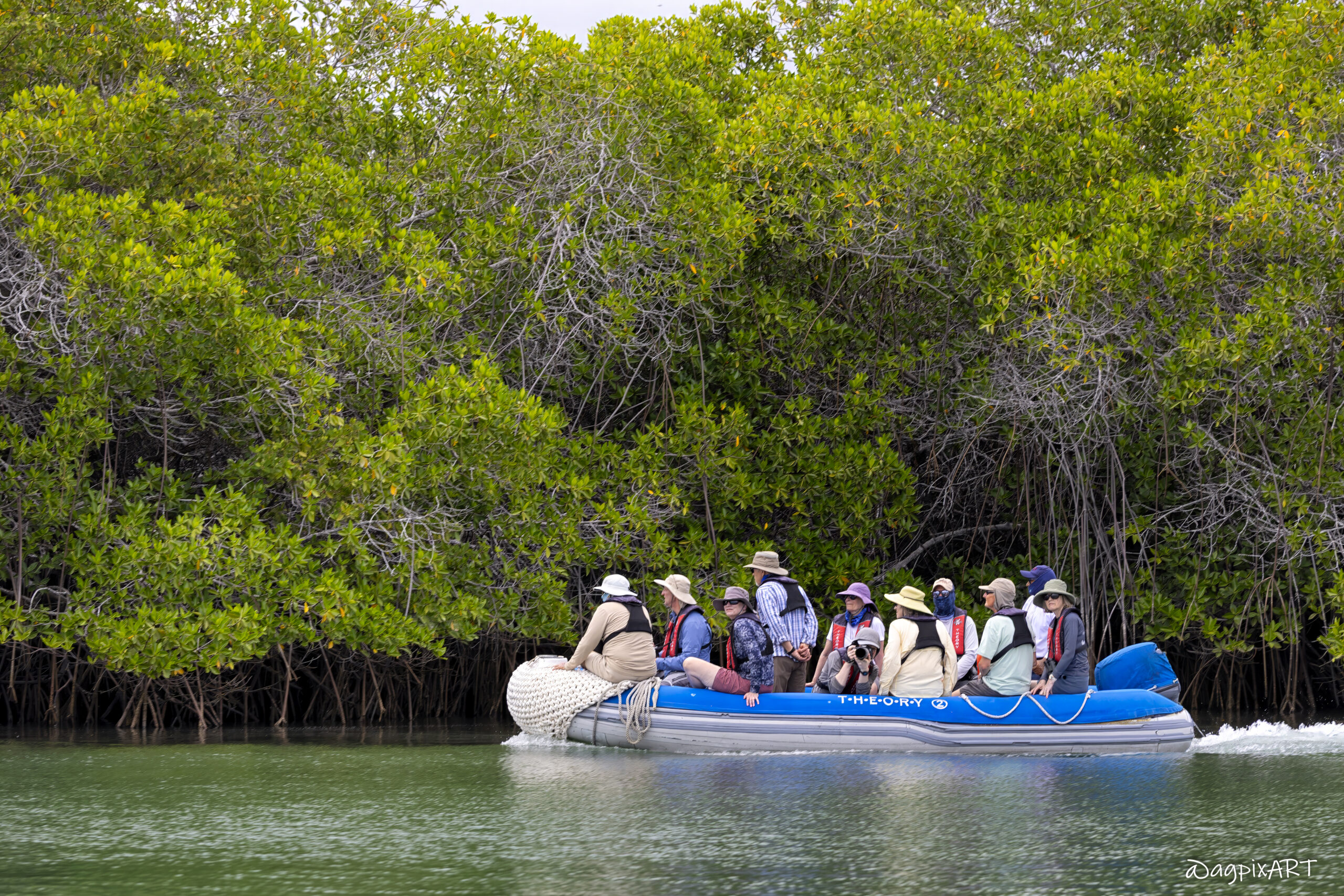
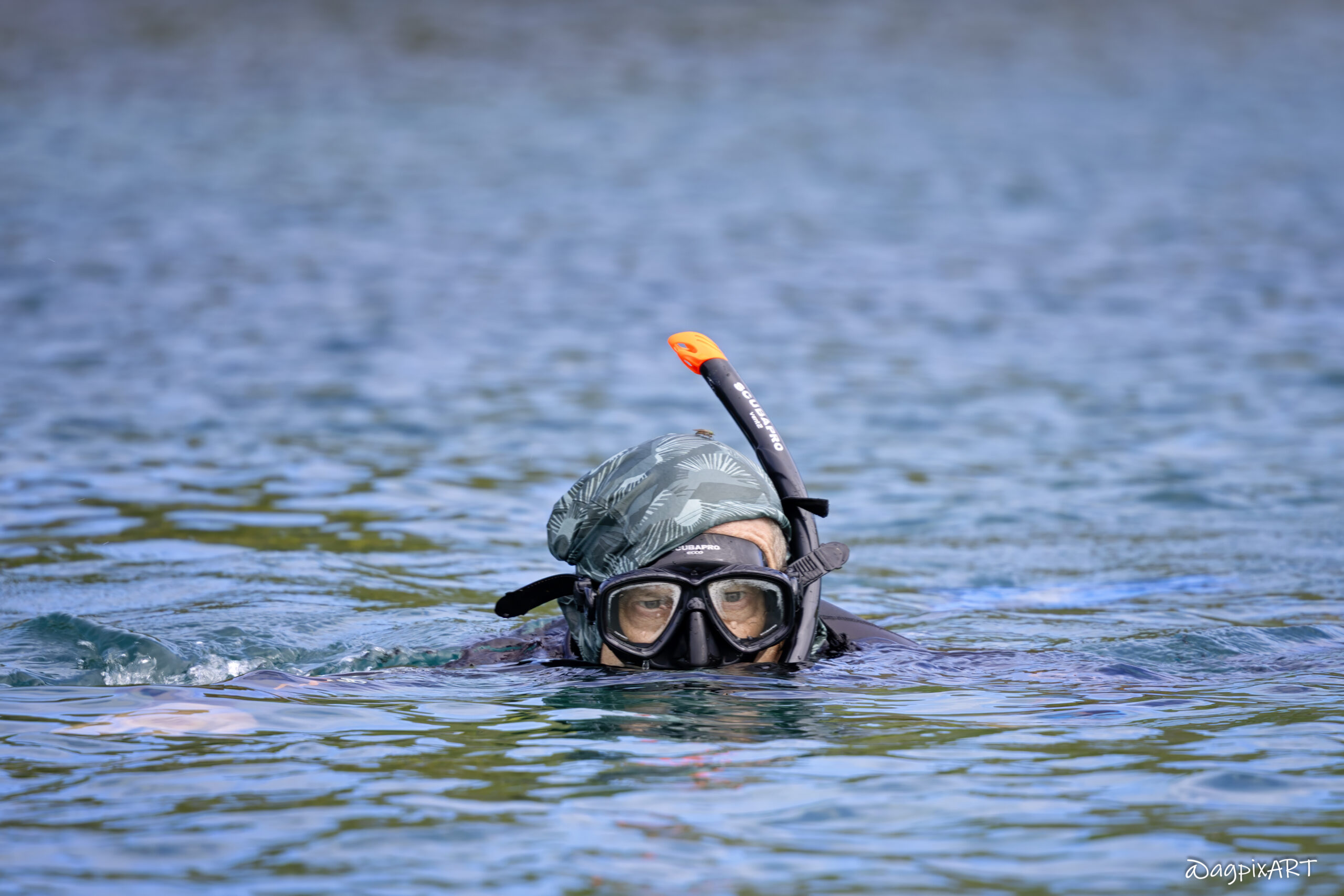
What-to-See
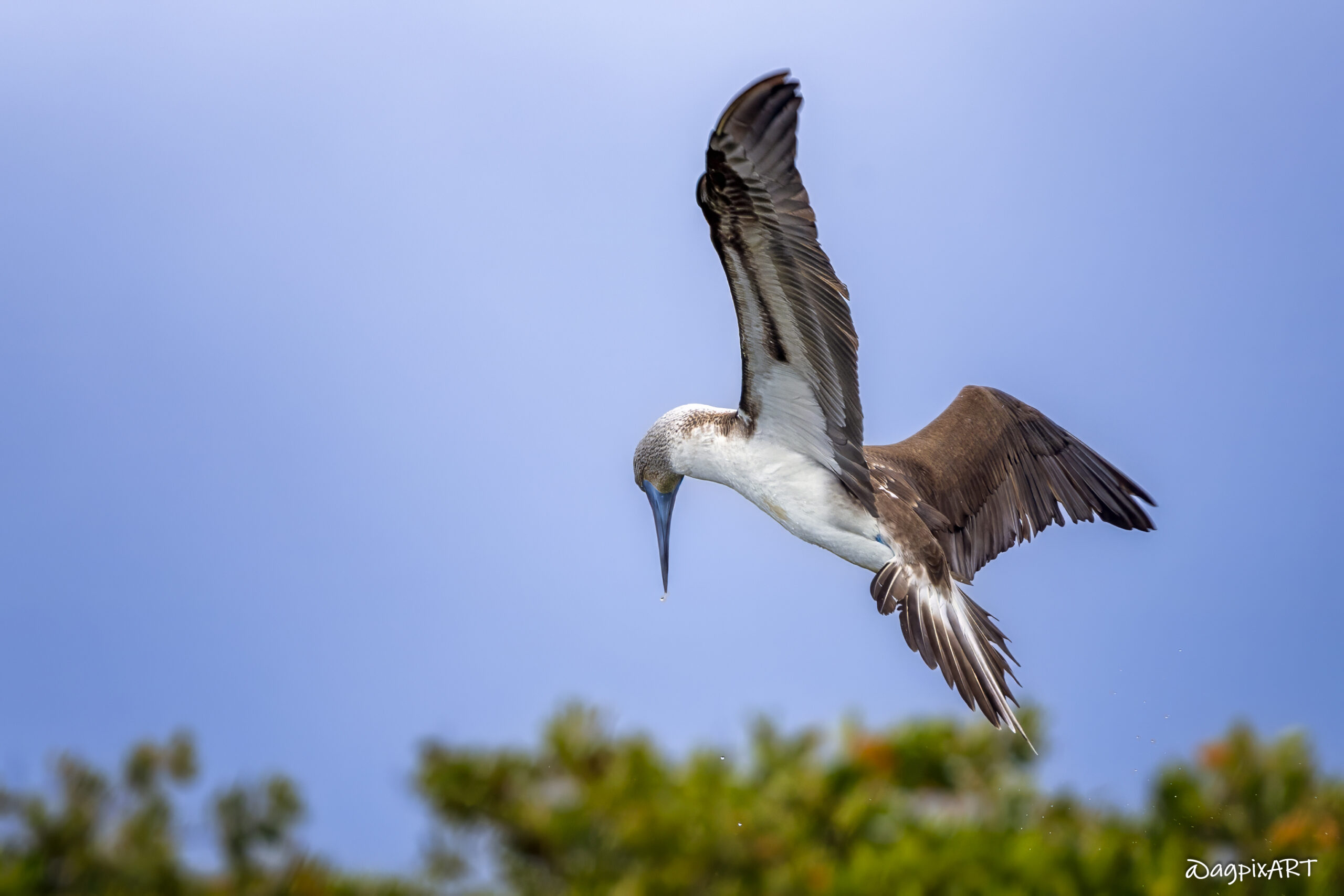
Blue-Footed Booby
(Sula nebouxii), an iconic Galápagos seabird, is easily recognized by its bright turquoise or blue feet, which are more vibrant in healthy, breeding adults. Males typically have brighter feet, while females have slightly duller ones. They have a white body with brown wings, a grayish-blue beak, and a distinctive brown patch on the chest. Juveniles have duller, grayish feet and mottled plumage. These seabirds are clumsy on land but excel in the air and water, performing spectacular plunge dives from up to 100 feet at speeds of 60 mph to catch fish like sardines and anchovies.
They are frequently spotted in this sheltered cove, often dive-bombing into the water to feed.
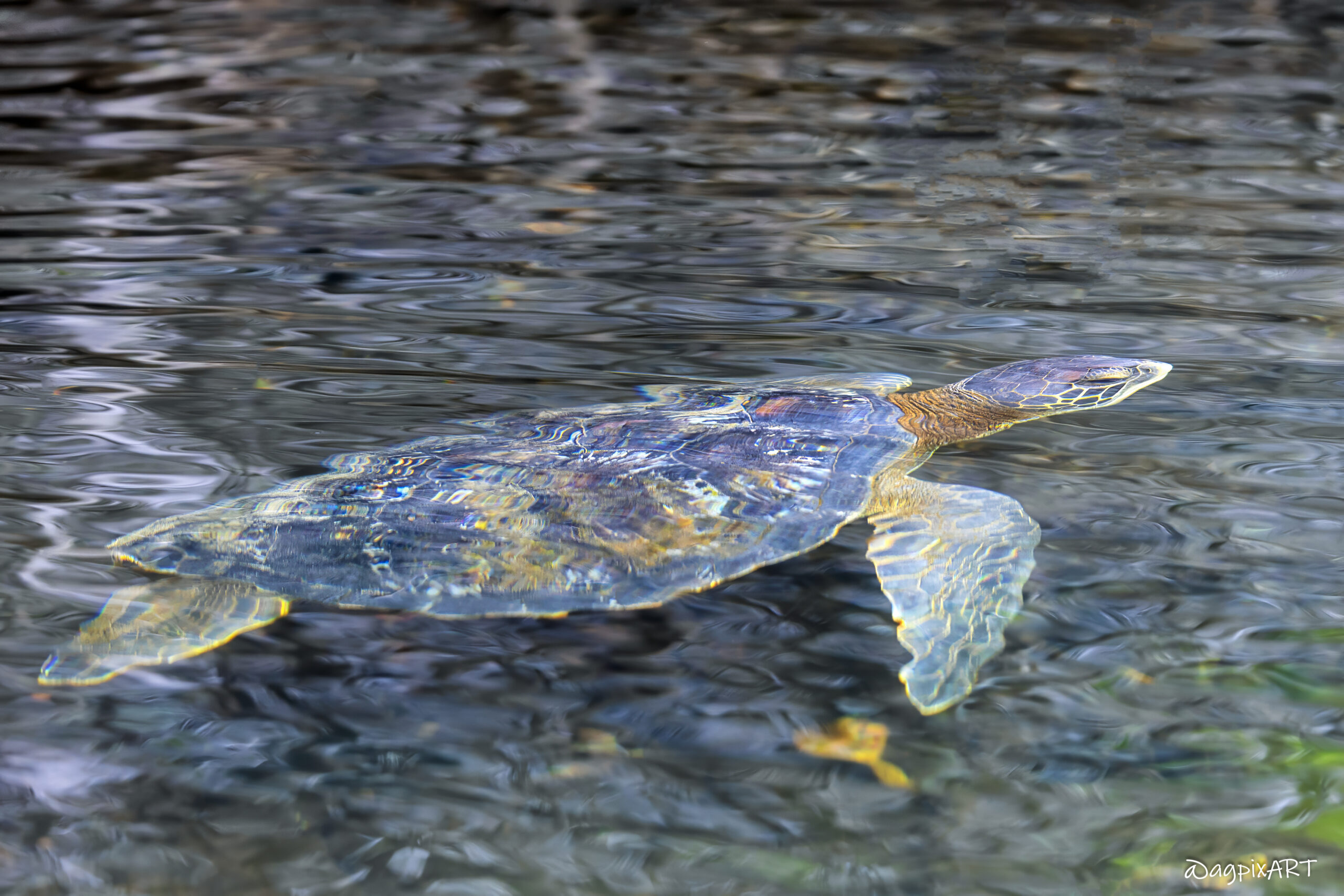
Green Sea Turtle
The Green Sea Turtle (Chelonia mydas) is the primary species seen at Black Turtle Cove, identifiable by its smooth, olive-to-black carapace (up to 4 feet long) and herbivorous diet of seagrass and algae. Juveniles may eat small invertebrates. They swim gracefully near mangroves or surface to breathe, as they can hold their breath for hours but typically dive for 4-5 minutes.
Mating occurs in the cove, particularly from Dec. to March. Females lay eggs on nearby beaches at night, digging nests to deposit 50-200 eggs, which hatch after about 60 days. Hatchlings face heavy predation from birds and crabs, with only about 1% surviving to adulthood.
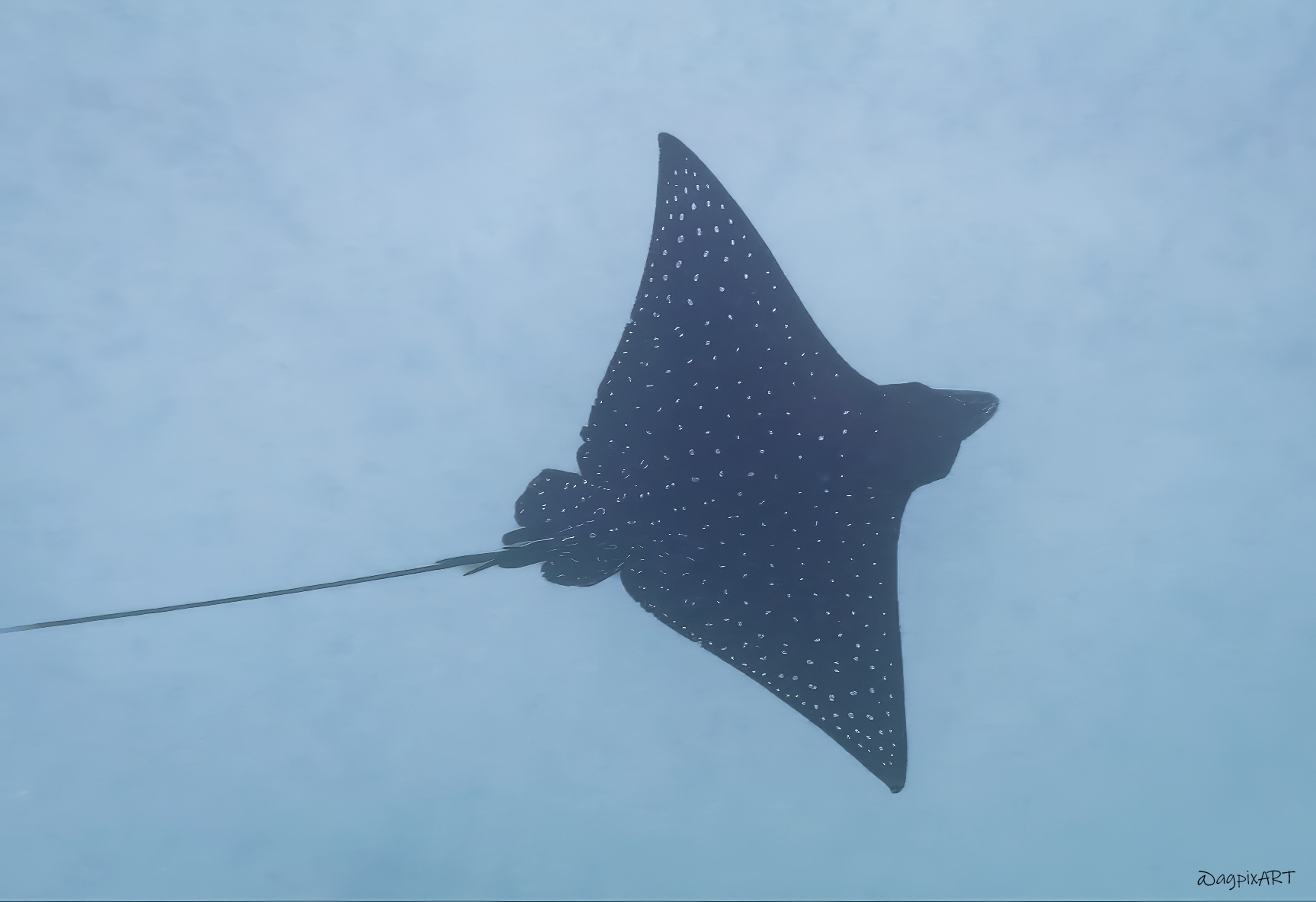
Spotted Eagle Ray
Spotted eagle rays (Aetobatus narinari) are easily recognizable by their diamond-shaped bodies, dark backs covered in white spots, and long, whip-like tails. Their wing-like pectoral fins give them a birdlike grace underwater. They feed on mollusks, crustaceans, and small fish, using their flat, crushing teeth to break open shells. They are often solitary but can be spotted in small groups, especially in nutrient-rich waters like those at Black Turtle Cove, where food is abundant.
These rays can grow up to 10 feet (3 meters) across, including their fins, and their tails can be twice as long as their bodies, making them an impressive presence underwater.
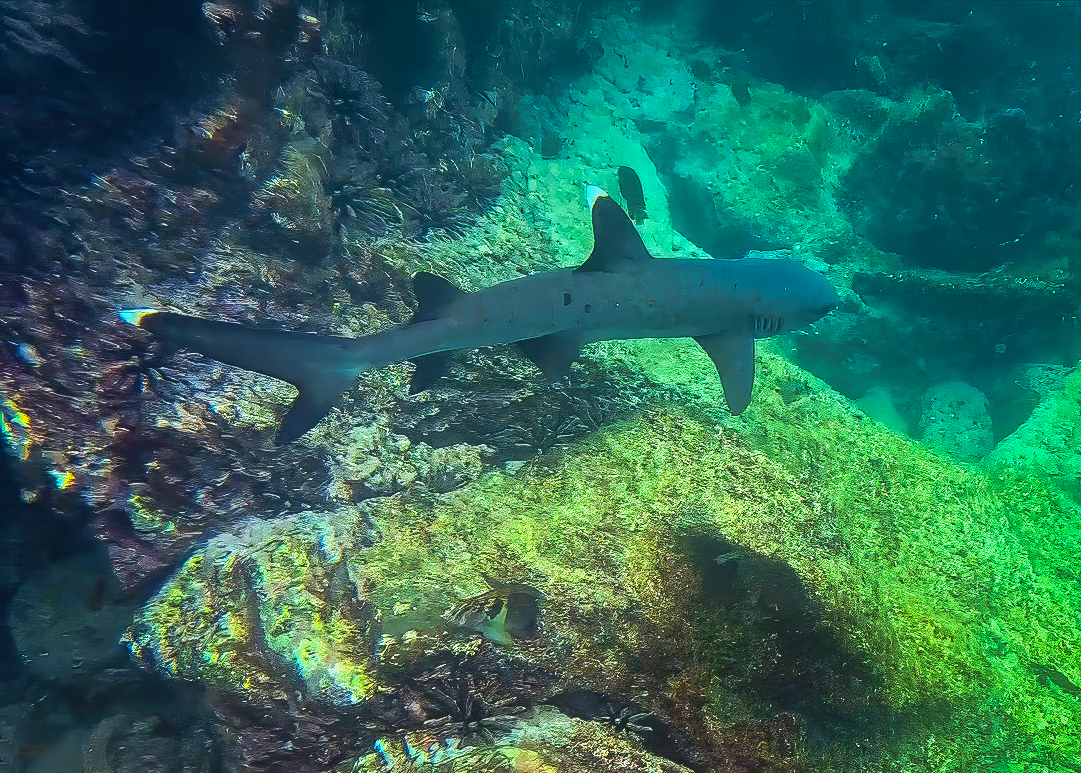
White-tip Reef Shark
Named for the bright white tips on their dorsal and tail fins, these sharks (Triaenodon obesus) are easy to spot. Unlike more active predators, white-tip reef sharks are docile and often seen resting in groups on the ocean floor or in shallow caves. They come alive at night, hunting small fish, crustaceans, and octopuses in the Galápagos’ reefs. Growing to about 5–6 feet (1.5–1.8 meters), their slim, agile bodies allow them to navigate tight spaces in reefs or mangroves. They can pump water over their gills while resting, allowing them to “breathe” without swimming.
These sharks pose no threat to snorkelers, making them a safe and exciting sight for visitors.
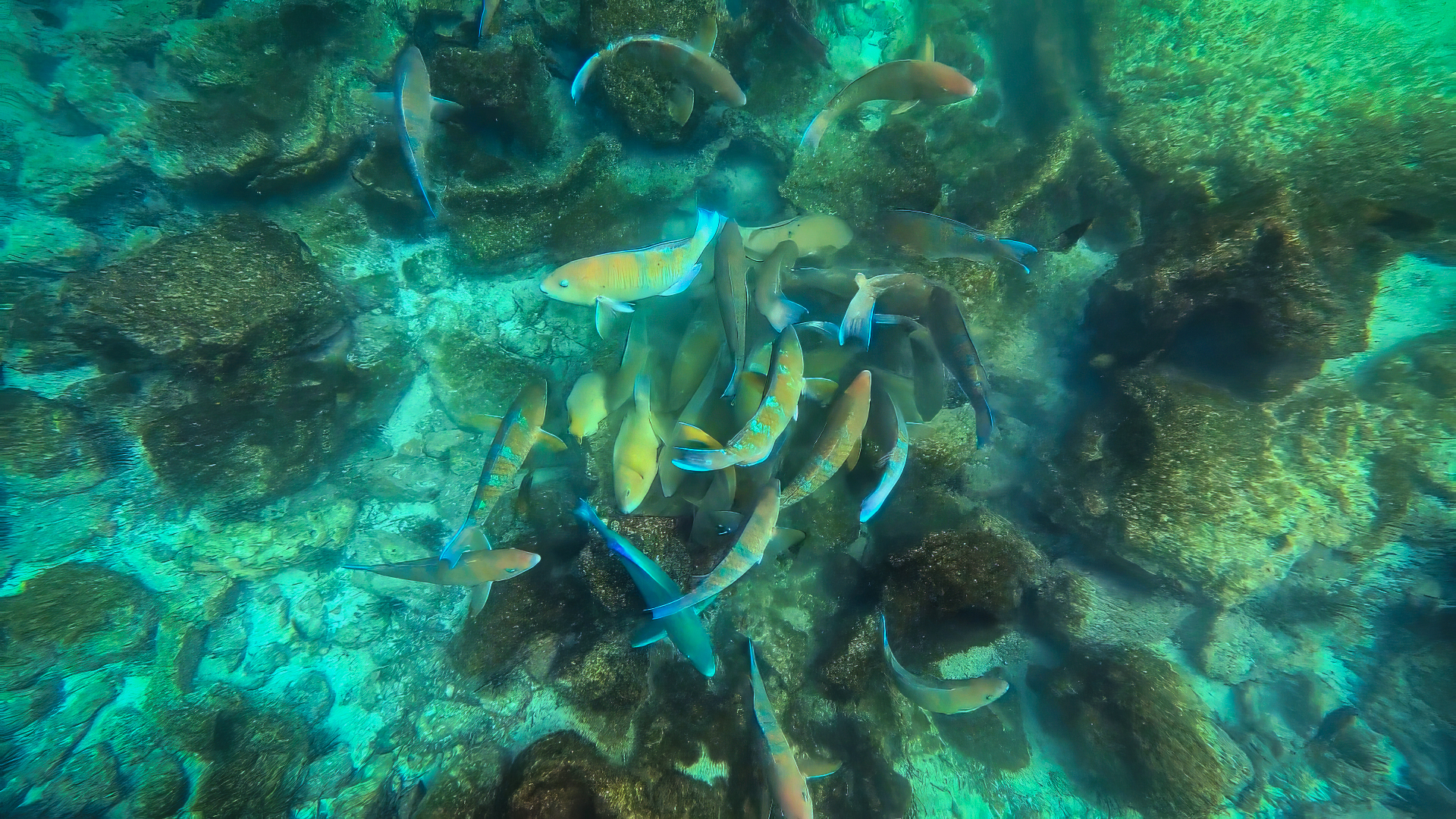
Parrotfish
Named for their bright, parrot-like colors (blues, greens, pinks, and yellows), Parrotfish play a key role in the Galápagos ecosystem by grinding coral and excreting fine sand, literally helping create the beaches. Their fused, beak-like teeth are perfect for scraping algae and small organisms off rocks and corals. They often swim in small schools, making them easy to spot. Many parrotfish species are sequential hermaphrodites, starting life as females and later turning into males, often with a dramatic color change.
The Galápagos hosts several parrotfish species, like the blue parrotfish (Scarus ghobban) and bicolor parrotfish (Cetoscarus bicolor).
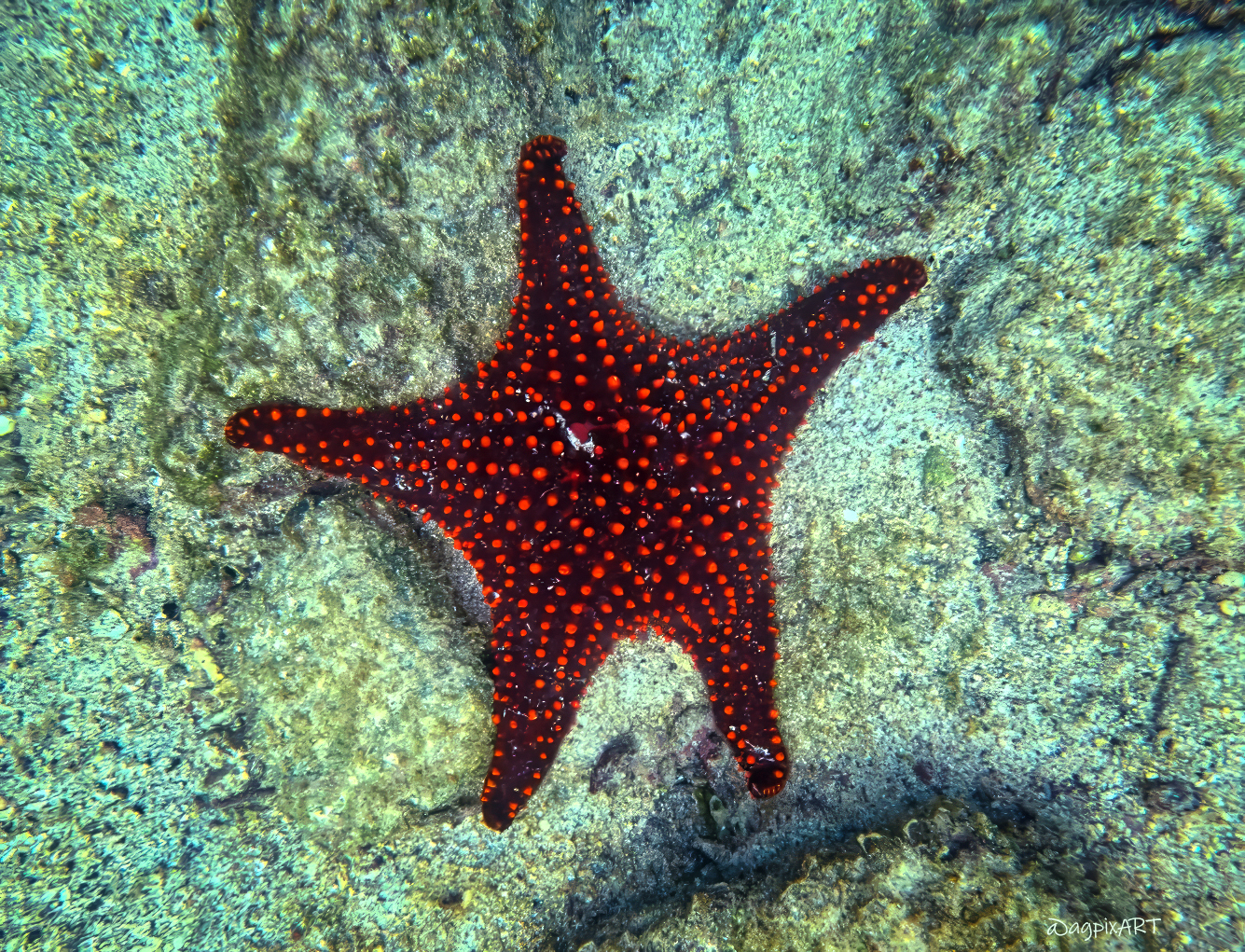
Sea Star
A red starfish , such as species from the Oreasteridae family or similar genera, are striking with their bright red or reddish-orange hues, making them stand out against the rocky reefs. Starfish use hundreds of tiny tube feet to move and grip surfaces.
They are key players in the Galápagos marine ecosystem, feeding on algae, small invertebrates, and organic matter, helping keep reefs clean.
If a red starfish loses an arm to a predator, it can regrow it—a fascinating trait you might notice if you see one with uneven arms.

Galápagos Land Iguana
Land iguanas (Conolophus species) are iconic reptiles known for their prehistoric, dragon-like scaly, spiky appearance and yellow-orange hues. Males, especially during mating season (June to August), turn vibrant yellow or reddish, a striking sight against the dull terrain. They can grow up to 3–4 feet (1–1.2 meters) long and weigh up to 25 pounds (11 kg), with males being larger and more territorial, often head-bobbing to assert dominance. They are ectothermic, soaking up the sun on rocks to regulate body temperature, especially in the morning.
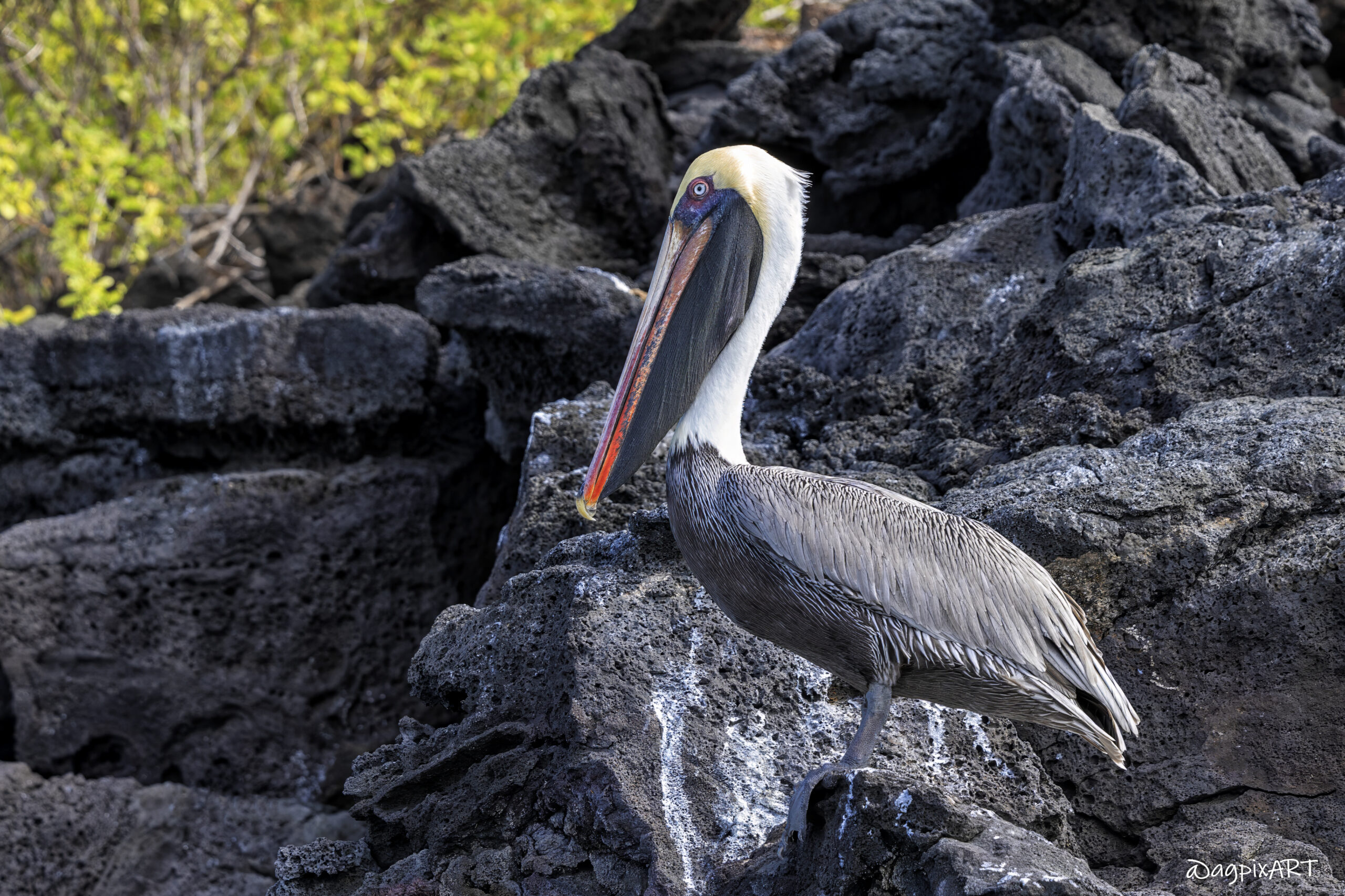
Galápagos Brown Pelican
Brown pelicans (Pelecanus occidentalis urinator) are famous for their dramatic plunge-dives, diving from up to 60 feet (18 meters) into the waters to scoop up fish. Their stretchy throat pouch can hold up to 3 gallons (11 L) of water and fish. They feed on small fish like sardines. During mating season (peaking in warmer months), males develop vibrant reddish or yellowish hues on their pouches. The brown pelicans are a unique Galápagos subspecies, slightly larger than mainland cousins, adapted to the island’s rich marine environment.
Instructions for photo proofing and comments:
Left-click on the photo to access options for title information (i), leave comment, or mark the photo(s) as the favorite. The option to submit the selected as favorite photos is under “Submit proofs” button under photo gallery.
